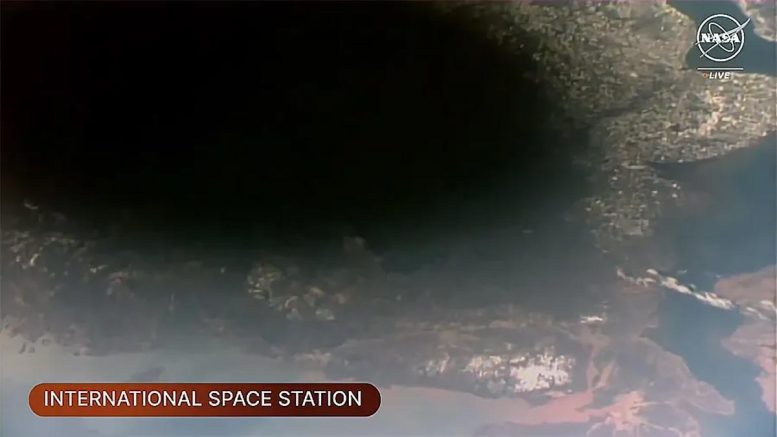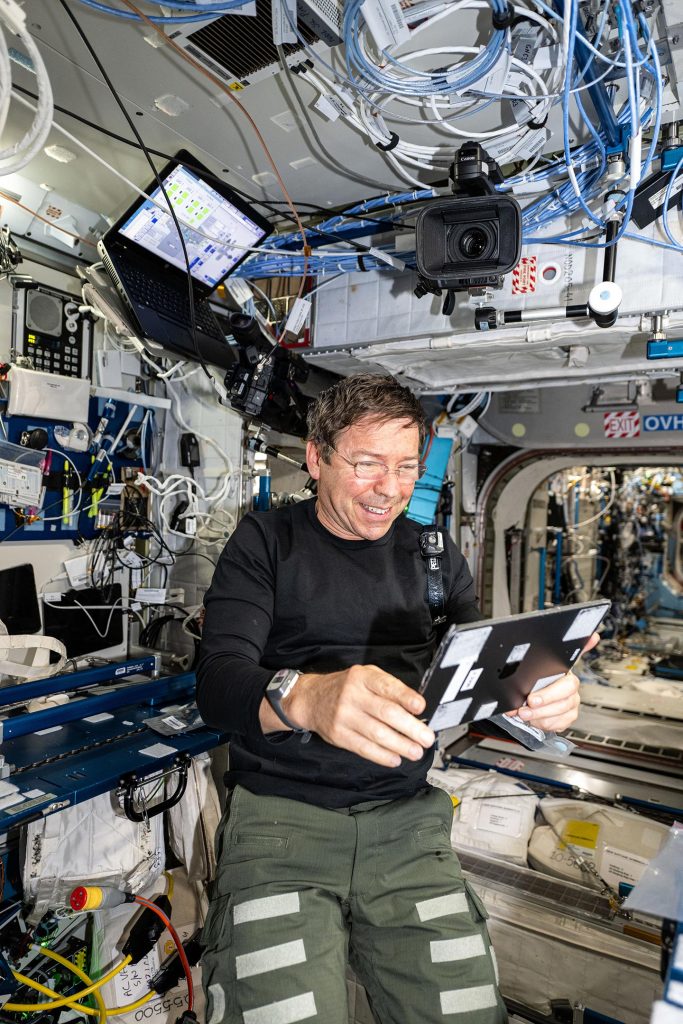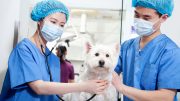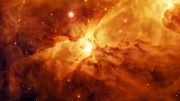
The Moon’s shadow, or umbra, on Earth was visible from the space station as it orbited into the path of the solar eclipse over southeastern Canada. Credit: NASA TV
During the solar eclipse, the ISS crew, while 260 miles above Earth, captured the Moon’s shadow crossing from New York to Newfoundland.
The International Space Station (ISS) soared into the Moon’s shadow during the solar eclipse on Monday afternoon. The Expedition 71 crew members had an opportunity to view the shadow at the end of their workday filled with cargo transfers, spacesuit maintenance, and microgravity research.
The windows on the cupola, the orbital outpost’s “window to the world,” were open and NASA Flight Engineers Matthew Dominick and Jeanette Epps were inside photographing and videotaping the Moon’s shadow on Earth, or umbra, beneath them. They were orbiting 260 miles above southeastern Canada as the Moon’s umbra was moving from New York state into Newfoundland.
Eclipse and Daily Operations
The space station experienced a totality of about 90% during its flyover period. Views of the solar eclipse itself, the Moon orbiting directly between the sun and the Earth, were only accessible through a pair of windows in the space station’s Roscosmos segment which may not have been accessible due to cargo constraints.

NASA astronaut and Expedition 71 Flight Engineer Michael Barratt uses an iPad to review the on-orbit schedule for residents aboard the International Space Station. Credit: NASA
Crew Activities and Maintenance
Before the eclipse activities began on Monday, Dominick worked on orbital plumbing, serviced a pair of science freezers and swapped cargo in and out of the SpaceX Dragon spacecraft. Dominick then joined NASA astronaut Mike Barratt inspecting spacesuit tethers and organizing spacewalking tools.
Epps installed a small satellite orbital deployer inside the Kibo laboratory module’s airlock and also participated in the Dragon cargo work. NASA Flight Engineer Tracy C. Dyson assisted Epps with the small satellite installations and cargo transfers. Dyson also reviewed operations with the BioFabrication Facility and prepared research hardware for an upcoming session to print cardiac tissue cell samples.
Station Commander Oleg Kononenko spent Monday on inspection tasks in the aft end of the Zvezda service module and Progress 87 resupply ship. He also jogged on a treadmill for about an hour while attached to sensors and electrodes for a periodic fitness test. Flight Engineer Nikolai Chub focused his attention on electronics and ventilation maintenance. Chub also spent a few moments assisting Flight Engineer Alexander Grebenkin as he attached sensors to himself to measure his heart activity for a long-running Roscosmos space cardiac investigation. He later turned on an ultrasound device and scanned surfaces inside Zvezda.









Hurricane also causes the similar dark shadow as this quarter shown under the dark shadow of moon.